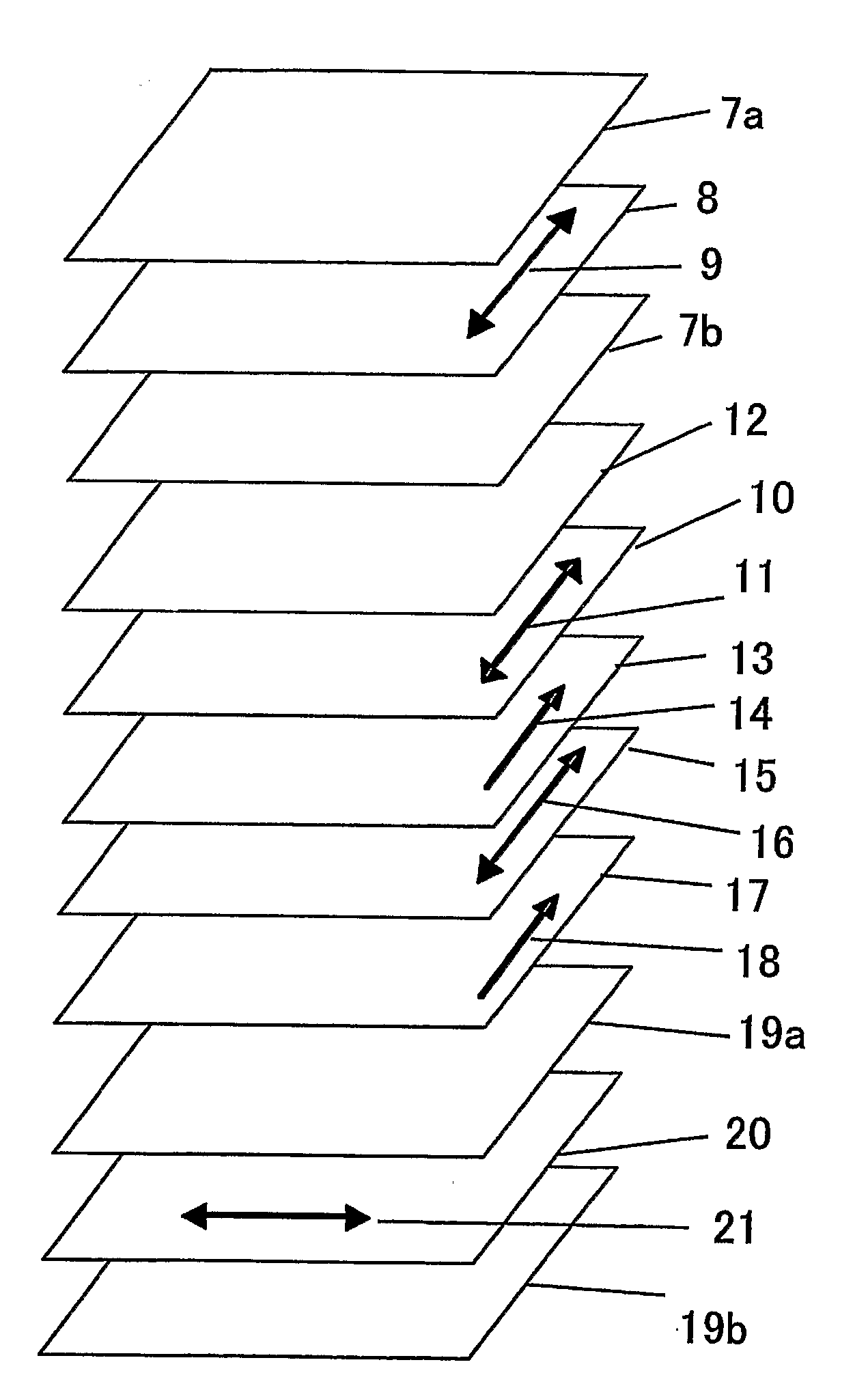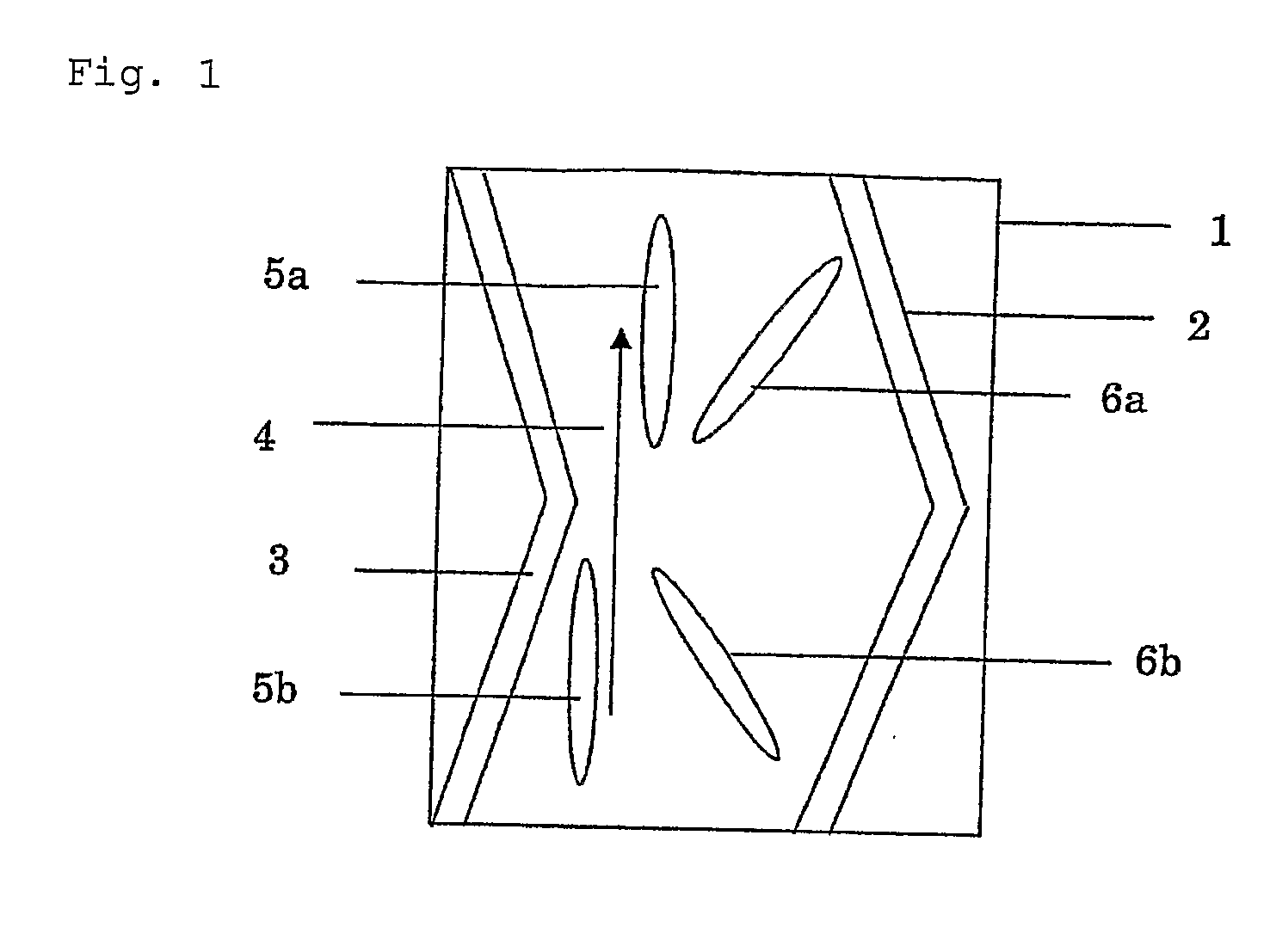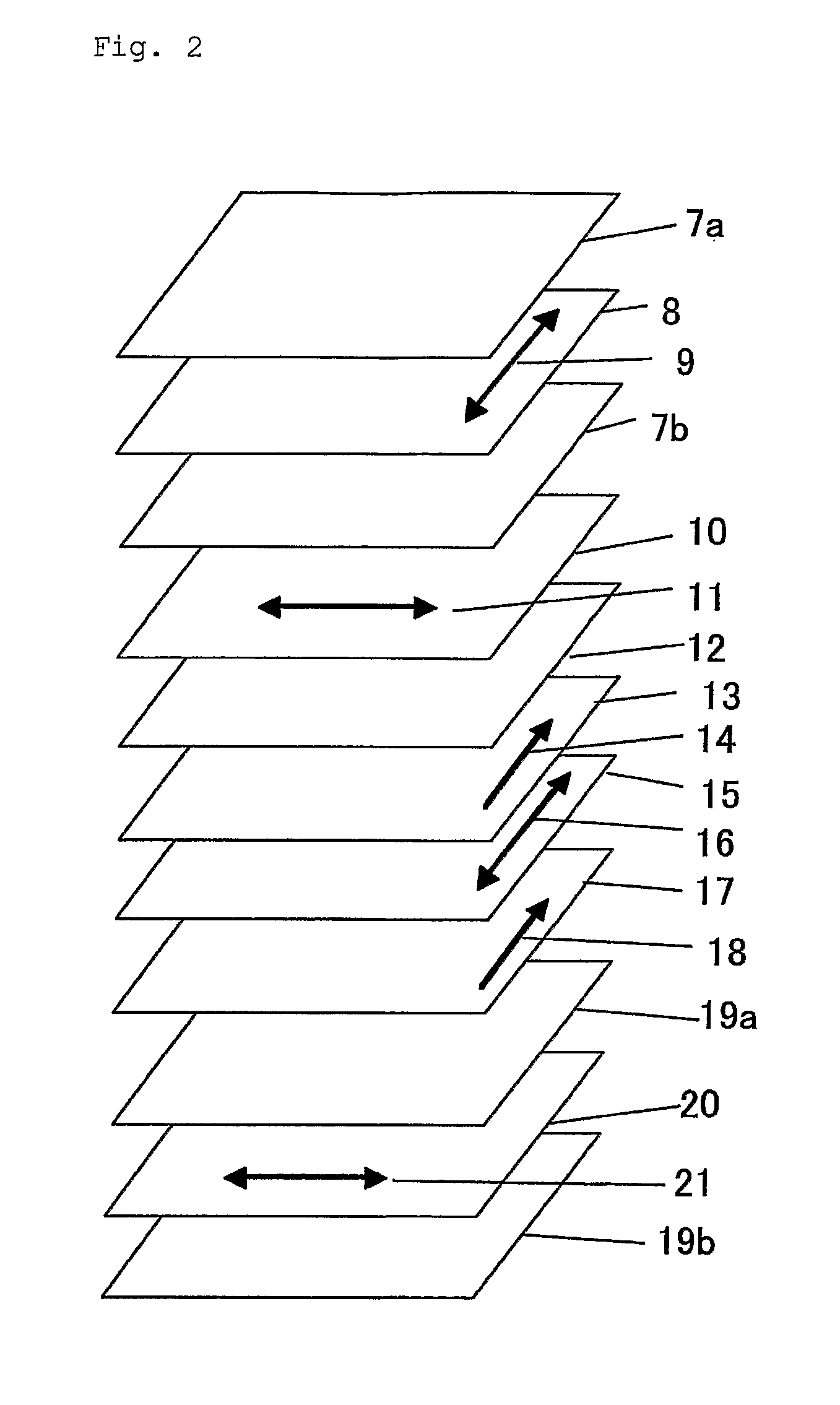Liquid Crystal Display Device
a liquid crystal display and display device technology, applied in the field of liquid crystal display devices, can solve the problems of difficult optical compensation of liquid crystal cells perfectly, lowering display quality, and not being able to avoid grayscale inversions generating at under areas, so as to reduce color variation generating, improve contrast, and reduce the effect of displaying quality
- Summary
- Abstract
- Description
- Claims
- Application Information
AI Technical Summary
Benefits of technology
Problems solved by technology
Method used
Image
Examples
example 1
[0140]The first retardation region No. 1 as prepared was stuck on the side of the polarizing plate protective film No. 2 of the polarizing plate A using an acrylic adhesive in such a manner that the transmission axis of the polarizing film and the slow axis of the first retardation region No. 1 were intersected perpendicularly to each other. Further, the second retardation region No. 1 was stuck thereonto using an acrylic adhesive.
[0141]This laminate was stuck on one side of the IPS mode liquid crystal cell No. 1 as prepared previously in such a manner that the transmission axis of the polarizing plate was parallel to the rubbing direction of the liquid crystal cell (that is, the slow axis of the first retardation region No. 1 was intersected perpendicularly to the slow axis of the liquid crystal molecule of the liquid crystal cell in a black state) and that the side of the second retardation region No. 1 was faced at the liquid crystal cell side.
[0142]Subsequently, the polarizing p...
example 2
[0144]The first retardation region No. 2 as prepared was stuck on the side of the polarizing plate protective film No. 1 of the polarizing plate B using an acrylic adhesive in such a manner that the transmission axis of the polarizing film and the slow axis of the first retardation region 2 were intersected perpendicularly to each other. Further, the second retardation region No. 1 was stuck thereonto using an acrylic adhesive.
[0145]This laminate was stuck on one side of the IPS mode liquid crystal cell No. 1 as prepared previously in such a manner that the transmission axis of the polarizing plate was parallel to the rubbing direction of the liquid crystal cell (that is, the slow axis of the first retardation region No. 2 was intersected perpendicularly to the slow axis of the liquid crystal molecule of the liquid crystal cell in a black state) and that the side of the second retardation region No. 1 was faced at the liquid crystal cell side.
[0146]Subsequently, the polarizing plate...
example 3
[0147]The first retardation region No. 3 as prepared was stuck on the polarizing plate D using an acrylic adhesive in such a manner that the transmission axis of the polarizing film and the slow axis of the first retardation region No. 3 were parallel to each other. In this construction, FUJITAC TD80UF having an Re of 2 nm and an Rth of 48 nm which is the protective film of the polarizing plate D is corresponding to the second retardation region.
[0148]This laminate was stuck on one side of the IPS mode liquid crystal cell No. 1 as prepared previously in such a manner that the transmission axis of the polarizing plate was parallel to the rubbing direction of the liquid crystal cell (that is, the slow axis of the first retardation region No. 3 was parallel to the slow axis of the liquid crystal molecule of the liquid crystal cell in a black state) and that the side of the first retardation region No. 3 was faced at the liquid crystal cell side.
[0149]Subsequently, the polarizing plate ...
PUM
| Property | Measurement | Unit |
|---|---|---|
| thickness | aaaaa | aaaaa |
| thickness | aaaaa | aaaaa |
| thickness | aaaaa | aaaaa |
Abstract
Description
Claims
Application Information
 Login to View More
Login to View More - R&D
- Intellectual Property
- Life Sciences
- Materials
- Tech Scout
- Unparalleled Data Quality
- Higher Quality Content
- 60% Fewer Hallucinations
Browse by: Latest US Patents, China's latest patents, Technical Efficacy Thesaurus, Application Domain, Technology Topic, Popular Technical Reports.
© 2025 PatSnap. All rights reserved.Legal|Privacy policy|Modern Slavery Act Transparency Statement|Sitemap|About US| Contact US: help@patsnap.com



